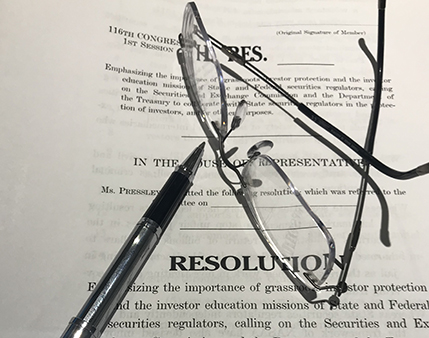NASAA Seeks to Help Industry Develop Model Fee Disclosure to Help Investors Compare Costs for Services
Download: NASAA Broker-Dealer Fee Survey
WASHINGTON, D.C. (April 24, 2014) – A report released today by the North American Securities Administrators Association (NASAA) shared survey findings that uncovered a wide disparity in how broker-dealers disclose the fees they charge their customers and questionable practices regarding broker-dealer fee charges and markups.
“The report raises concerns regarding the transparency and reasonableness of broker-dealer fee practices. State regulators will be examining these issues more closely, but welcome the opportunity to work with industry to ensure that fees are reasonable and fairly disclosed to investors. Improved fee disclosure will help investors compare fees effectively and efficiently,” said Andrea Seidt, NASAA President and Ohio Securities Commissioner.
While broker-dealers may be complying with the technical requirements governing fee disclosures, the study concluded that the disclosures lose their effectiveness when hidden in small print, imbedded in lengthy account opening documents, or varied in terminology that does not define the service provided.
“Fees hidden within pages of impenetrable verbiage is not meaningful fee disclosure,” Seidt said. “Investors should be able to easily compare and contrast fees among the various broker-dealers in order to make an informed investment decision.”
Seidt said the survey was prompted by actions taken by state securities regulators in Connecticut involving inappropriate fees charged by broker-dealers. The Investment Products and Services Project Group within NASAA’s Broker-Dealer Section conducted the survey by collecting select fee data from 34 broker-dealers starting in 2012. The report and survey results are available on the NASAA website here.
The survey found:
- Diverse disclosure methods. Disclosures explaining fees to clients ranged from a single paragraph to seven pages in length. Initial fee disclosures lack uniformity whether by method of disclosure, terminology used, or location of the disclosure.
- Questionable markups on fees charged to investors. For example, mark-ups on transfer fees ranged from 100 percent to 280 percent above the wholesale cost to the broker-dealer.
The report notes that pursuant to NASD Conduct Rule 2430 the fees imposed by broker-dealers on customer accounts must be reasonable for the services performed. Fees that are not reasonably related to services, or that are excessive, may constitute violations of state laws and FINRA rules.
The Project Group contacted a clearing firm for a number of the broker-dealers in the survey pool to discern how much the broker-dealer is actually charged for various services and compare those underlying costs with fees charged to the customer. The data received from the clearing firm revealed that broker-dealers in the survey pool reap a significant windfall by charging high markups for services delivered to their customers. In one case, for example, a broker-dealer charged customers $500 to receive securities in certificate form, more than eight times the $60 cost the broker-dealer’s clearing firm had charged the broker-dealer for the same service.
Regulators found that Automated Customer Account Transfer (ACAT) fees ranged from zero to $175 among the broker-dealers surveyed. These fees are charged for the transfer of assets in a customer account from one brokerage firm and/or bank to another. The Project Group also analyzed data from a large clearing firm that provides clearing services to nine of the surveyed broker-dealers. While the clearing firm charged $25 to facilitate an account transfer, the broker-dealers charged customers between $50 and $100 to facilitate the transfer, a markup ranging from 100 percent to 280 percent.
Based on the survey’s findings, the report recommends that NASAA work with FINRA and the broker-dealer industry to develop a model fee disclosure that is simple to read, easily accessible, and can be used effectively by investors to understand and compare fees. The report also suggests greater investor education to help investors find and understand the fees they are being charged and calls for the creation of a task force to work with industry in standardizing the language, placement, and structure of fee disclosures similar to the model for simplified fee disclosed now being implemented by the banking industry. Finally, the report recommends that individual NASAA member jurisdictions review the issues raised regarding disclosure and fee markups.
For More Information:
Bob Webster | Director of Communications
202-737-0900











